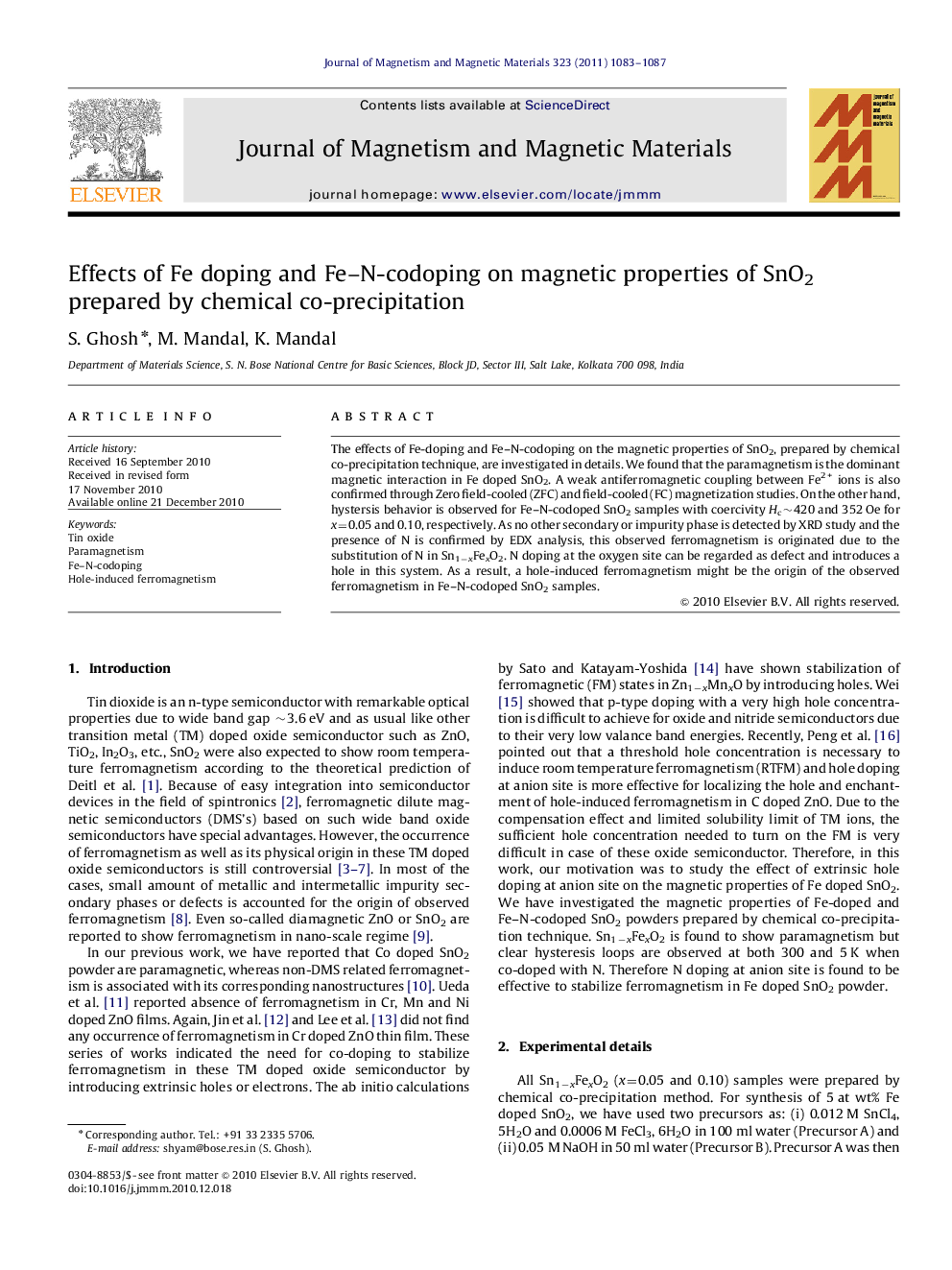| کد مقاله | کد نشریه | سال انتشار | مقاله انگلیسی | نسخه تمام متن |
|---|---|---|---|---|
| 1800502 | 1024533 | 2011 | 5 صفحه PDF | دانلود رایگان |

The effects of Fe-doping and Fe–N-codoping on the magnetic properties of SnO2, prepared by chemical co-precipitation technique, are investigated in details. We found that the paramagnetism is the dominant magnetic interaction in Fe doped SnO2. A weak antiferromagnetic coupling between Fe2+ ions is also confirmed through Zero field-cooled (ZFC) and field-cooled (FC) magnetization studies. On the other hand, hystersis behavior is observed for Fe–N-codoped SnO2 samples with coercivity Hc∼420 and 352 Oe for x=0.05 and 0.10, respectively. As no other secondary or impurity phase is detected by XRD study and the presence of N is confirmed by EDX analysis, this observed ferromagnetism is originated due to the substitution of N in Sn1−xFexO2. N doping at the oxygen site can be regarded as defect and introduces a hole in this system. As a result, a hole-induced ferromagnetism might be the origin of the observed ferromagnetism in Fe–N-codoped SnO2 samples.
Research highlights
► The effect of extrinsic hole doping (N substitution) at anion site on the magnetic properties of Fe doped SnO2 is studied.
► Paramagnetism is found to be the dominant magnetic interaction in Fe doped SnO2.
► On the other hand, ferromagnetism is observed in case of Fe–N-codoped SnO2 samples.
► A hole-induced ferromagnetism might be the origin of the observed ferromagnetism.
► An evidence of weak d0 ferromagnetism between N defects was also observed at very low temperature.
Journal: Journal of Magnetism and Magnetic Materials - Volume 323, Issue 8, April 2011, Pages 1083–1087